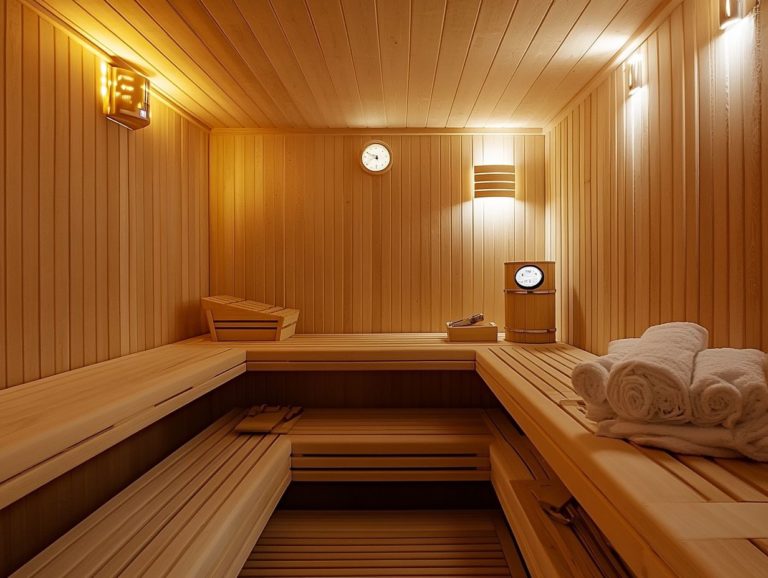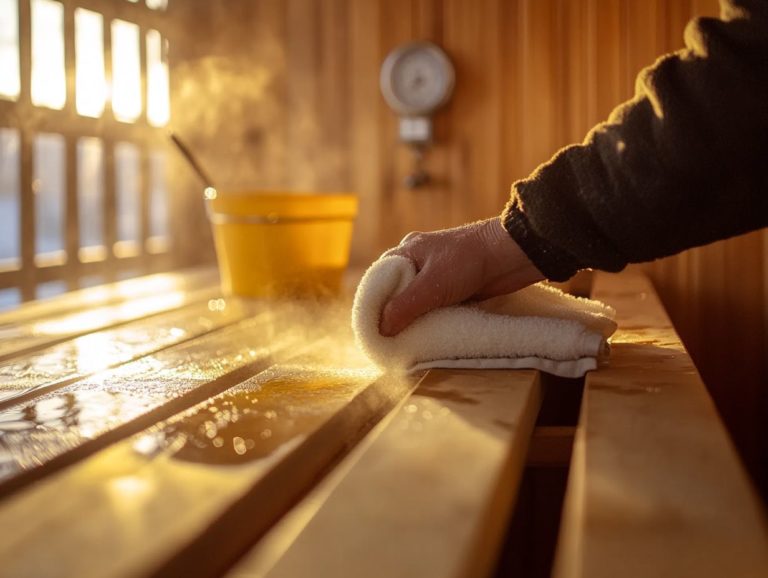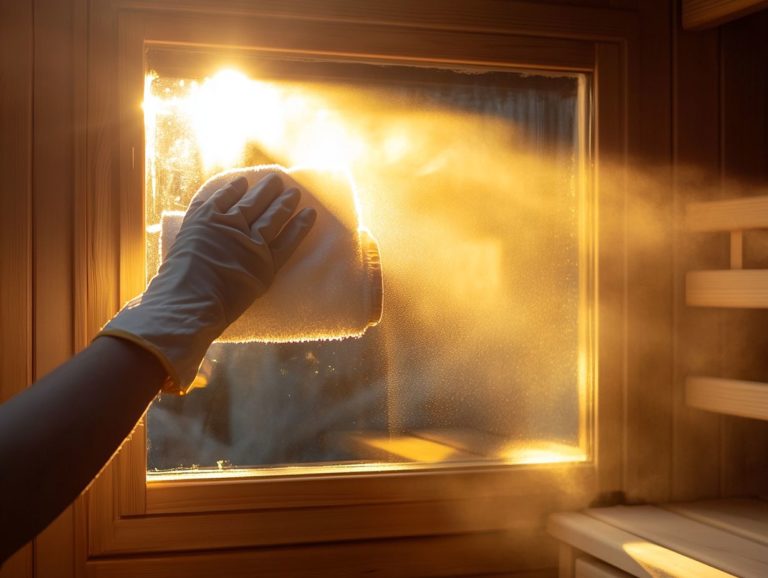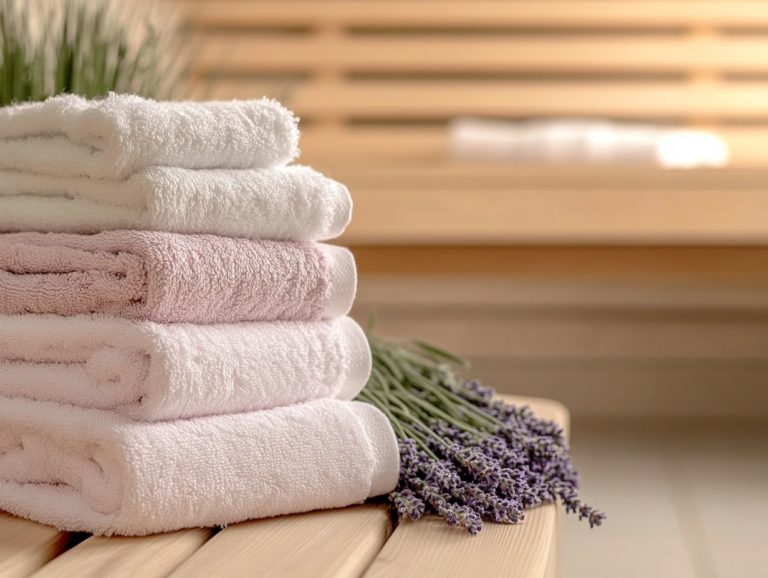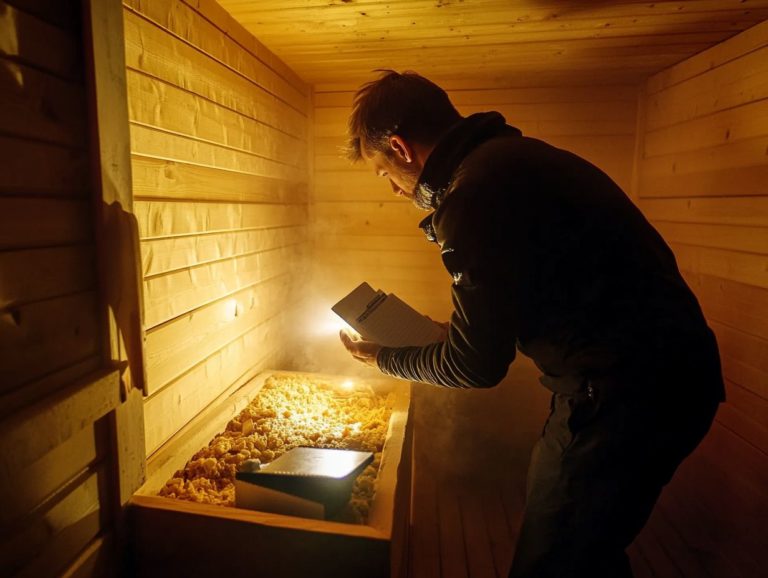Best Practices for Sauna Wood Treatments
When constructing your ideal sauna, the selection and treatment of wood are crucial factors that influence its longevity and performance.
Proper wood treatment elevates the aesthetic appeal of your sauna and serves as a barrier against moisture, mold, and decay, making it essential for sauna care.
Get ready to explore the best ways to treat your sauna wood! This article guides you through the advantages of treated wood, the various types you might consider, and the essential preparation steps necessary for sauna wood maintenance.
You ll also learn about effective treatment methods both chemical and natural along with best practices for ongoing maintenance and re-treatment.
Let s dive in and discover how to keep your sauna looking great for years to come!
Contents
Key Takeaways:
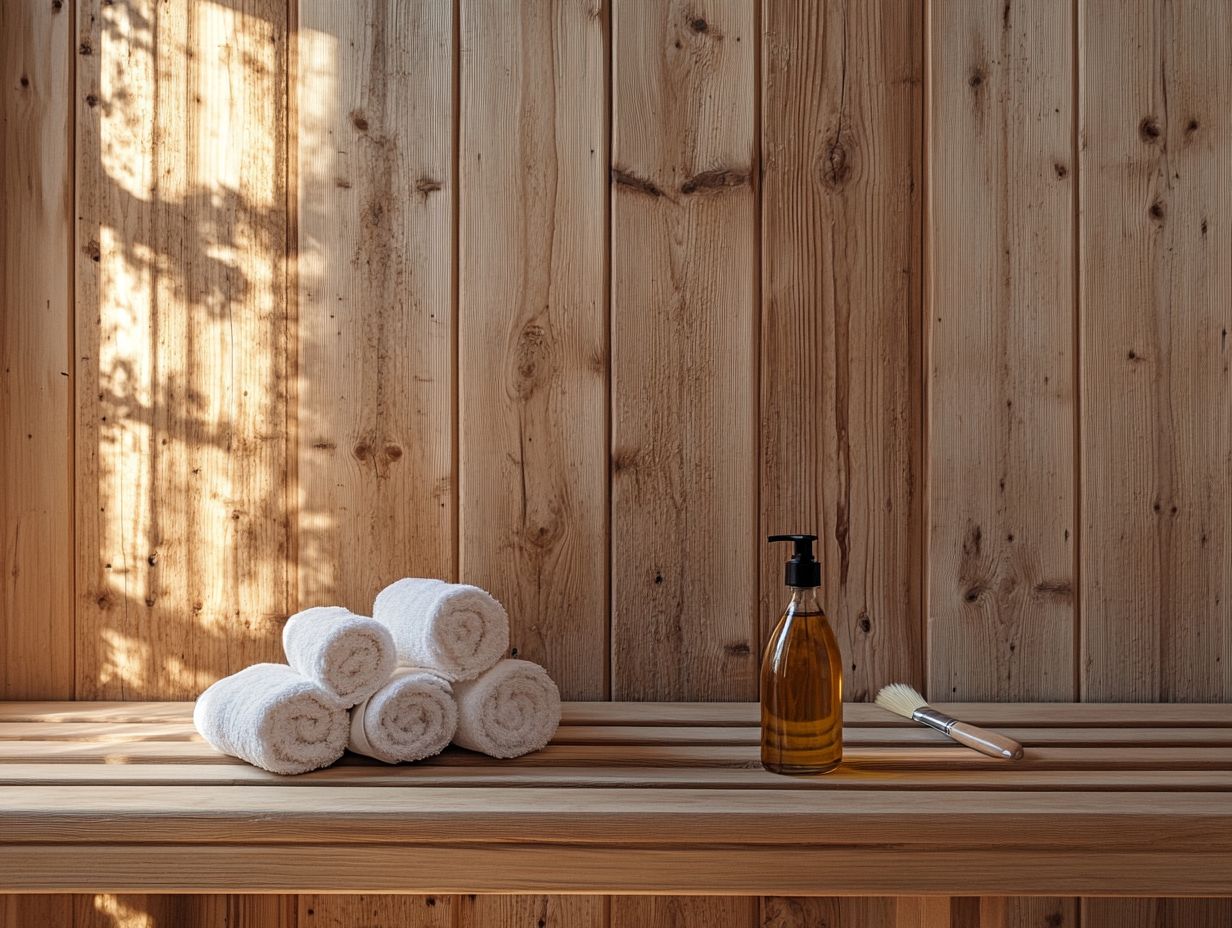
- Proper wood treatment is crucial for the longevity and functionality of saunas, as it protects against moisture, bacteria, and warping.
- Common wood types used in saunas have unique characteristics that should be considered when choosing a treatment method.
- Regular maintenance and re-treatment are necessary for optimal results, and natural treatments are a more eco-friendly option for sauna products.
Why Proper Wood Treatment Matters for Your Sauna
Proper wood treatment is essential for preserving the integrity and longevity of your sauna, as it directly influences its performance, aesthetics, and the health benefits it offers.
Choosing treated wood enhances the sauna’s resistance to water damage and temperature fluctuations, ensuring that the wooden components remain clean and free from harmful toxins.
Opting for high-quality materials, like Thermory cedar panels, significantly improves air quality and elevates your overall experience during sauna sessions.
Benefits of Treated Wood
Treated wood presents numerous health benefits for sauna enthusiasts, particularly due to its remarkable moisture resistance, which effectively curbs the growth of mold and bacteria, ensuring a clean environment.
This characteristic not only enhances the cleanliness of your sauna experience but also plays a vital role in improving blood circulation a crucial element in supporting cardiovascular health. Many users report a noticeable decrease in muscle pain and tension after regular sessions, thanks to the comforting warmth of treated wood and the gentle steam it produces.
The natural properties of these materials assist in detoxification, helping your body expel toxins and fostering a renewed sense of well-being. Plus, the stability and durability of treated wood guarantee a long-lasting sauna experience, making it an even more appealing choice for those who prioritize their health.
Types of Wood Used in Saunas
The choice of wood for your sauna is essential, as different types offer unique benefits that enhance both functionality and aesthetics.
Consider options like cedar and Thermory; they not only bring a delightful aroma but also possess natural qualities that elevate your sauna experience. Their moisture resistance and thermal insulation properties ensure a comfortable and inviting atmosphere, allowing you to fully enjoy your time in the sauna. Additionally, it’s important to follow sauna use after workouts safety tips for a safe and enjoyable experience.
Common Types of Wood and Their Characteristics
Cedar stands out as a premier choice for sauna construction, celebrated for its remarkable durability, moisture resistance, and delightful natural aroma.
This wood cultivates a warm and inviting atmosphere and possesses unique oils that serve as natural preservatives, extending the sauna’s lifespan. The rich color and intricate grain of cedar create a visually soothing environment that many users find deeply calming. To ensure a safe experience, it’s important to follow sauna safety practices.
Beyond cedar, other organic materials like hemlock and pine offer distinct advantages. Hemlock is valued for its strength and hypoallergenic properties, making it an excellent option for those with sensitivities. Pine is renowned for its aesthetic charm and affordability, providing a budget-friendly choice without compromising on quality.
Together, these woods enhance your sauna experience, ensuring both comfort and durability as you relax and unwind.
Pre-Treatment Preparation
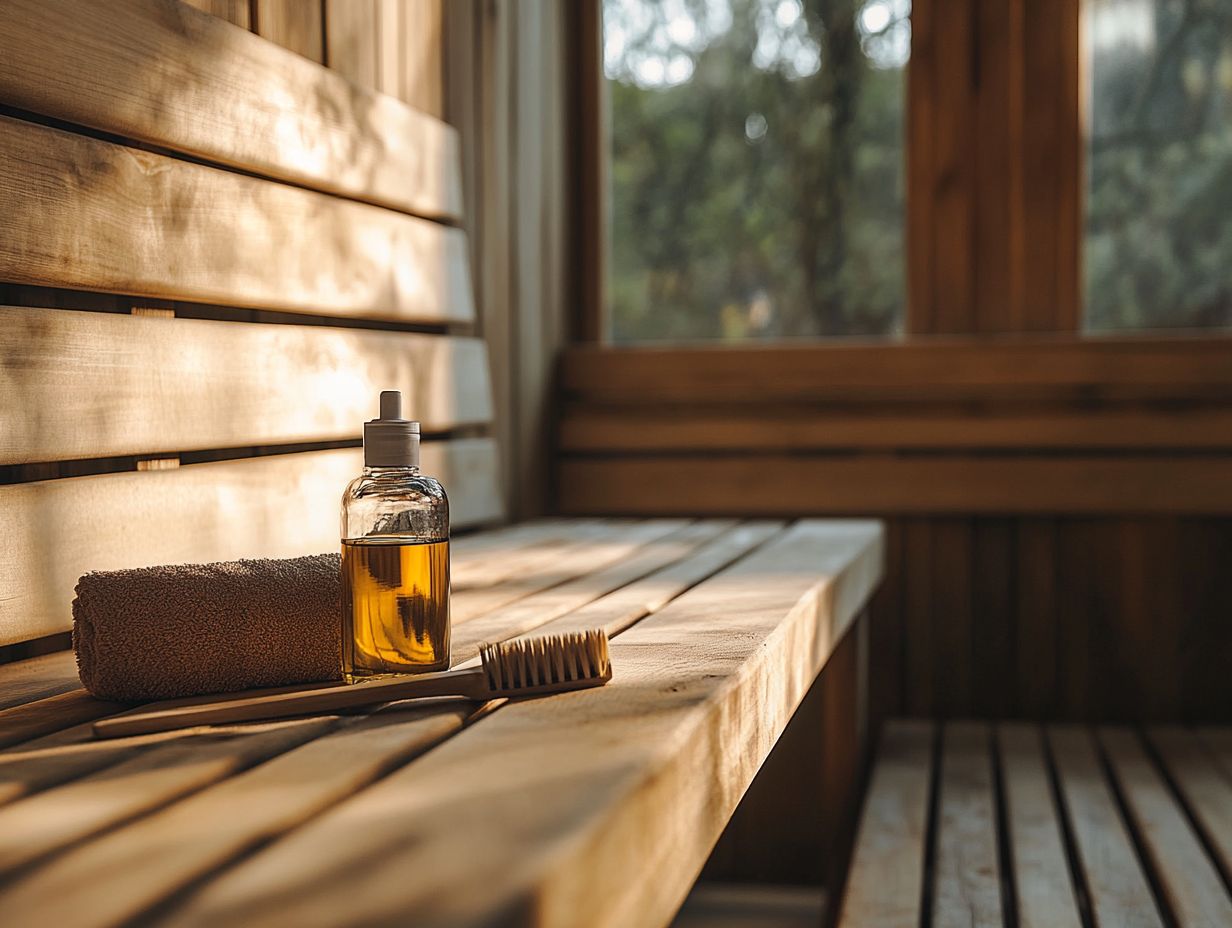
Preparing wood properly is key to effective sauna treatments. This boosts durability and functionality, especially for parts that face high heat and moisture.
Engaging in meticulous pre-treatment preparation means cleaning the surfaces thoroughly. This eliminates any existing toxins and dirt. Ensuring the wood is primed to absorb treatment products optimally sets the stage for long-lasting results.
Steps to Prepare Wood for Treatment
To prepare wood, start by thoroughly washing the surfaces, removing old finishes, and applying the right cleaning agents to ensure the wood is free from debris and toxins.
- Step 1: Choose a Cleaning Agent
Select a cleaning agent that suits your wood type. Avoid harsh chemicals that can damage the surface. - Step 2: Clean the Surface
Use a soft brush or cloth to gently scrub away dirt and grime. Rinse thoroughly to prevent any residue from lingering.
It’s also essential to inspect for imperfections like cracks or splinters, as these can compromise treatment effectiveness. For optimal upkeep, consider the benefits of professional sauna maintenance. Allow the wood to dry completely before proceeding to treatments or finishes. This will help ensure better adhesion, resulting in a more durable and visually appealing finish.
Methods of Treating Sauna Wood
You have a range of options for treating sauna wood, each method offering unique benefits tailored to your desired results and environmental considerations.
Chemical treatments typically deliver strong protection against moisture and pests, ensuring durability. Alternatively, natural treatments use organic materials, prioritizing minimal environmental impact while still providing effective care.
Chemical Treatments
Chemical treatments often involve using wood preservatives designed to protect against moisture, pests, and decay, ensuring the durability of the wooden components.
These treatments can vary significantly. Options include borate solutions, which are chemical treatments that help prevent fungi, and oil-based treatments that enhance the wood’s natural beauty while providing a waterproof barrier. Additionally, it’s important to know how to clean and maintain sauna towels to ensure your sauna stays in great condition.
Your treatment methods might include spraying, brushing, or soaking the wood, each presenting unique advantages depending on the protection level you seek and the type of wood used. It’s important to separate fact from fiction, so check out sauna maintenance myths debunked for accurate information.
Weigh potential risks, like harmful chemical exposure or changes to the wood’s appearance. By selecting the right chemical treatment, you can ensure optimal safety and durability, ultimately enriching the sauna experience for everyone who enjoys it. For further insights, explore the best practices for using a steam sauna.
Natural Treatments
Natural treatments often incorporate organic materials like linseed oil, which protect the wood while elevating its natural beauty without introducing harmful chemicals.
These eco-friendly options contribute to the longevity of your sauna while creating a healthier environment for users. Products such as beeswax and natural soaps effectively seal the wood while allowing it to breathe. Plus, using organic cedar oil can infuse a delightful scent, enhancing your overall sauna experience. For more tips, check out sauna floor care best practices.
By choosing these treatments, you ensure that your sauna maintains its aesthetic appeal and structural integrity, all while promoting an environmentally conscious approach to home wellness. This sustainable choice resonates with those who prioritize both their health and the health of the planet, while also considering sauna maintenance for enhanced safety.
Recommended Wood Treatments for Saunas
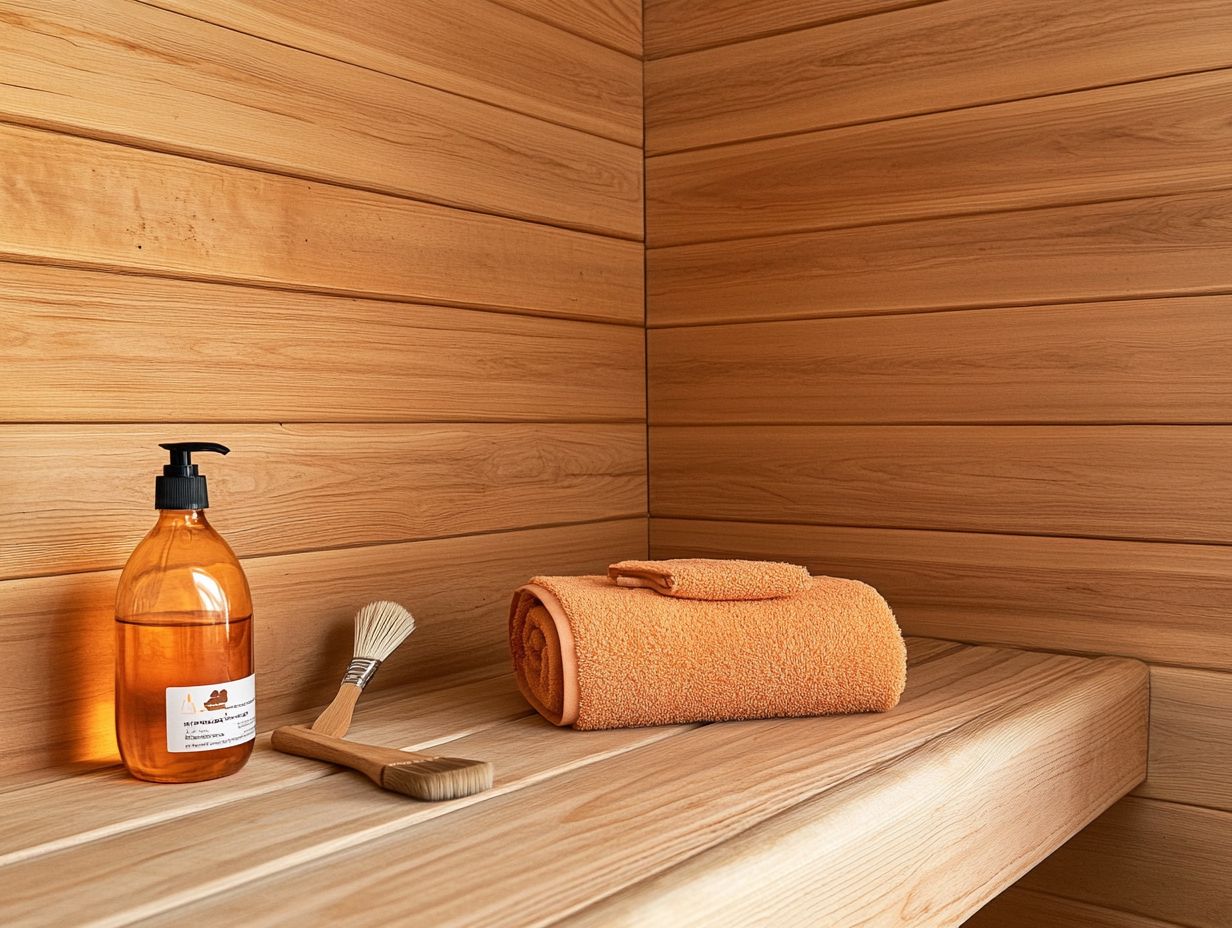
Choosing the right wood treatment can elevate your sauna experience! There are a variety of recommended treatments, including both chemical and natural options, designed to meet the specific needs of sauna owners seeking enduring results.
Top Choices for Long-Lasting Results
For long-lasting results in treating your sauna wood, it’s advisable to choose high-quality wood preservatives and natural oils. Brands like Sikkens and Penofin excel in providing durable wood finishes. Their products help maintain the beauty and integrity of sauna interiors over time. Remember, selecting the right product is just the start; proper maintenance is essential for lasting effects.
Regularly inspect the wood for signs of wear. Use gentle, non-abrasive cleaning solutions, and reapply the treatment every few years. Following guidelines for safe sauna parties not only prolongs the life of protective layers but also keeps your sauna looking fresh and inviting, enhancing your overall experience.
Maintenance and Re-Treatment
Maintaining your sauna requires consistent care to keep the wooden surfaces in excellent condition. This includes routine cleaning and necessary re-treatment for optimal upkeep.
By adhering to proper maintenance, you can significantly extend the lifespan of the sauna wood, protecting it from moisture and heat exposure.
How Often to Re-Treat and Tips for Maintenance
Re-treat your sauna wood every one to three years, depending on usage and environmental conditions. This schedule is crucial for preserving both the wood’s performance and visual appeal.
Consider factors like humidity levels, temperature fluctuations, and frequency of use. These elements significantly influence how often maintenance is needed. By monitoring the wood regularly, you can easily identify signs of wear or damage.
To effectively protect your sauna wood, choose high-quality, sauna-specific oils. These not only boost durability but also add a pleasant aroma. Ensure proper ventilation and prevent moisture buildup to prolong the life of your wooden features.
Keeping sauna benches and surfaces clean will further enhance their longevity, creating a welcoming and enjoyable experience each time you step inside.
Frequently Asked Questions
What are the best practices for sauna wood treatments?
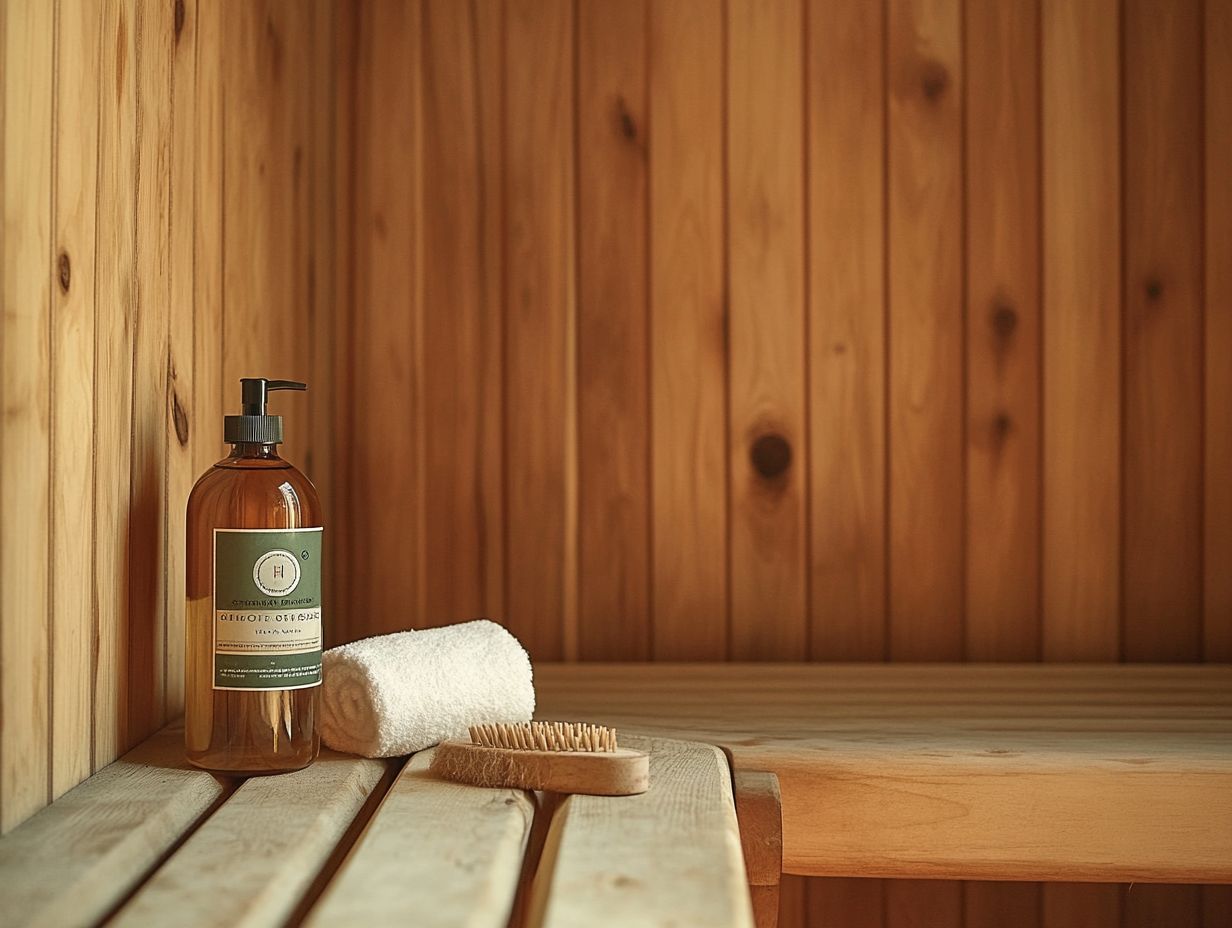
The best practices include using high-quality, kiln-dried wood, applying a sealant or protector, and regularly cleaning and maintaining the wood to prevent mold and mildew.
When should I treat my sauna wood?
Treat sauna wood right after installation for complete protection from moisture and heat. If you notice any wear or damage, reapply treatments as needed.
How often should I treat my sauna wood?
Treat sauna wood at least once a year or more frequently if used heavily. Regular treatments help maintain durability and prevent damage.
What types of sealants or protectors should I use on sauna wood?
Choose sealants and protectors designed for high heat and moisture environments, such as natural oils, varnishes, and water-based solutions.
Can I use regular wood treatments on sauna wood?
No, regular wood treatments may contain chemicals or toxins that can be harmful in the sauna’s high heat. It’s best to use products specifically made for sauna use.
Are there any natural options for treating sauna wood?
Yes, natural oils like linseed oil, tung oil, and cedar oil are excellent for treating sauna wood. These options are non-toxic and provide great protection.
For the best results, start your sauna wood maintenance journey today! Explore high-quality products to ensure your sauna remains inviting and beautifully preserved.

